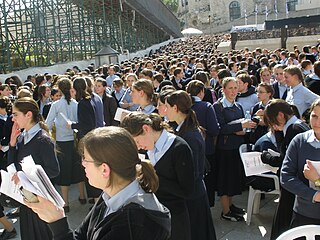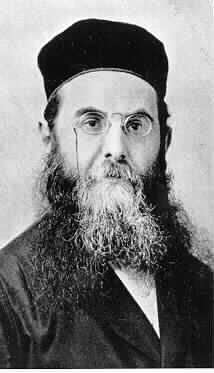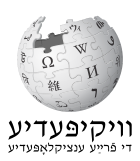Halakha, also transliterated as halacha, halakhah, and halocho, is the collective body of Jewish religious laws that are derived from the Written and Oral Torah. Halakha is based on biblical commandments (mitzvot), subsequent Talmudic and rabbinic laws, and the customs and traditions which were compiled in the many books such as the Shulchan Aruch. Halakha is often translated as "Jewish law", although a more literal translation of it might be "the way to behave" or "the way of walking". The word is derived from the root which means "to behave". Halakha not only guides religious practices and beliefs, it also guides numerous aspects of day-to-day life.
A rabbi is a spiritual leader or religious teacher in Judaism. One becomes a rabbi by being ordained by another rabbi—known as semikha—following a course of study of Jewish history and texts such as the Talmud. The basic form of the rabbi developed in the Pharisaic and Talmudic eras, when learned teachers assembled to codify Judaism's written and oral laws. The title "rabbi" was first used in the first century CE. In more recent centuries, the duties of a rabbi became increasingly influenced by the duties of the Protestant Christian minister, hence the title "pulpit rabbis", and in 19th-century Germany and the United States rabbinic activities including sermons, pastoral counseling, and representing the community to the outside, all increased in importance.

A yeshiva, jeshibah is a traditional Jewish educational institution focused on the study of Rabbinic literature, primarily the Talmud and halacha, while Torah and Jewish philosophy are studied in parallel. The studying is usually done through daily shiurim as well as in study pairs called chavrusas. Chavrusa-style learning is one of the unique features of the yeshiva.

A Rebbe or Admor is the spiritual leader in the Hasidic movement, and the personalities of its dynasties. The titles of Rebbe and Admor, which used to be a general honor title even before the beginning of the movement, became, over time, almost exclusively identified with its Tzadikim.

Satmar is a Hasidic group founded in 1905 by Grand Rebbe Joel Teitelbaum (1887–1979), in the city of Szatmárnémeti, Hungary. The group is an offshoot of the Sighet Hasidic dynasty. Following World War II, it was re-established in New York.

A mikveh or mikvah is a bath used for ritual immersion in Judaism to achieve ritual purity.

In Judaism, ritual washing, or ablution, takes two main forms. Tevilah (טְבִילָה) is a full body immersion in a mikveh, and netilat yadayim is the washing of the hands with a cup.

Bais Yaakov is a genericized name for full-time Haredi Jewish elementary and secondary schools for girls throughout the world.
World Agudath Israel, usually known as the Aguda, was established in the early twentieth century as the political arm of Ashkenazi Torah Judaism. It succeeded Agudas Shlumei Emunei Yisroel in 1912. Its base of support was located in Eastern Europe before the Second World War but, due to the revival of the Hasidic movement, it included Orthodox Jews throughout Europe. Prior to World War II and the Holocaust, Agudath Israel operated a number of Jewish educational institutions throughout Europe. After the war, it has continued to operate such institutions in the United States as Agudath Israel of America, and in Israel. Agudath Israel is guided by its Moetzes Gedolei HaTorah in Israel and the USA.

Isaiah or Yeshayahu ben Avraham Ha-Levi Horowitz, , also known as the Shelah HaKaddosh after the title of his best-known work, was a prominent rabbi and mystic.

Yeshiva Torah Vodaas is a yeshiva in the Flatbush neighborhood of Brooklyn, New York.

Joseph Perl, was an Ashkenazi Jewish educator and writer, a scion of the Haskalah or Jewish Enlightenment. He wrote in Hebrew, Yiddish, and German; in 1819, he published the first Hebrew novel. Born and raised in the Austrian province of Galicia shortly after its annexation in the first partition of Poland, he was a follower of Hasidism in his youth. Later, he turned against Hasidism and became a proponent of Jewish emancipation and Haskalah, although he remained an observant Jew. He is best known for his many writings on Hasidism, ranging from critical treatises to parody.
For the purposes of this article, “contemporary” refers to the period from 1967 to the present day, “Jewish” refers to the various streams and traits of Judaism practiced. Many Orthodox Jews use the term “religious” to refer to a strict adherence to Jewish law. For the purposes of this article, “religious” refers to the content and context of the music itself: liturgical or implicit references to the divine.
Allan L. Nadler is Wallerstein Professor Emeritus of Religious Studies and Former Director of the Jewish Studies Program at Drew University in Madison, New Jersey.
Hashkafa is the Hebrew term for worldview and guiding philosophy, used almost exclusively within Orthodox Judaism. A hashkafa is a perspective that Orthodox Jews adopt that defines many aspects of their lives. Hashkafa thus plays a crucial role in how these interact with the world around them, and influences individual beliefs about secularity, gender roles, and modernity. In that it guides many practical decisions—where to send children to school, what synagogue to attend, and what community to live in—hashkafa works in conjunction with halakha or Jewish law.

Yaakov Perlow was an American Hasidic rabbi and rosh yeshiva, and Rebbe of the Novominsk Hasidic dynasty. From 1998 until his death in 2020, he was president of Agudath Israel of America, a Haredi advocacy organization. He was also head of that organization's Moetzes Gedolei HaTorah. He was one of the most respected leaders of the American Orthodox Jewish community, known for his scholarly and oratorical skills.
Mesivta is an Orthodox Jewish yeshiva secondary school for boys. The term is commonly used in the United States to describe a yeshiva that emphasizes Talmudic studies for boys in grades 9 through 11 or 12; alternately, it refers to the religious studies track in a yeshiva high school that offers both religious and secular studies.

Aaron L. Raskin is an American Chabad Lubavitch rabbi and writer. He serves as spiritual leader of Congregation B'nai Avraham, an Orthodox synagogue in Brooklyn Heights, New York, and dean of Brooklyn Heights Jewish Academy.

Mnachem (Mendel) HaKohen Risikoff, was an orthodox rabbi in Russia and the United States, and a prolific author of scholarly works, written in Hebrew. Risikoff used a highly stylized and symbolic pen-name, יאמהדנונחהים, made up of the Hebrew letters of his first name, the Hebrew word for Lord, and the Tetragrammaton, one of Judaism's terms for God. It is not clear whether this pen name was used in conversation, or whether it was used only in his writings.

Hamichlol is a censored wiki-based Internet encyclopedia project for the Haredi public. Most of the articles on the site are exact copies of articles from the Hebrew Wikipedia or re-edited versions of Hebrew Wikipedia articles, adapted for the Haredi reader, while original articles currently constitute only a small portion of all the articles on the site. The site is managed and operated by the Institute for Literacy and Proper Knowledge, which was established for the purpose of creating the site.













